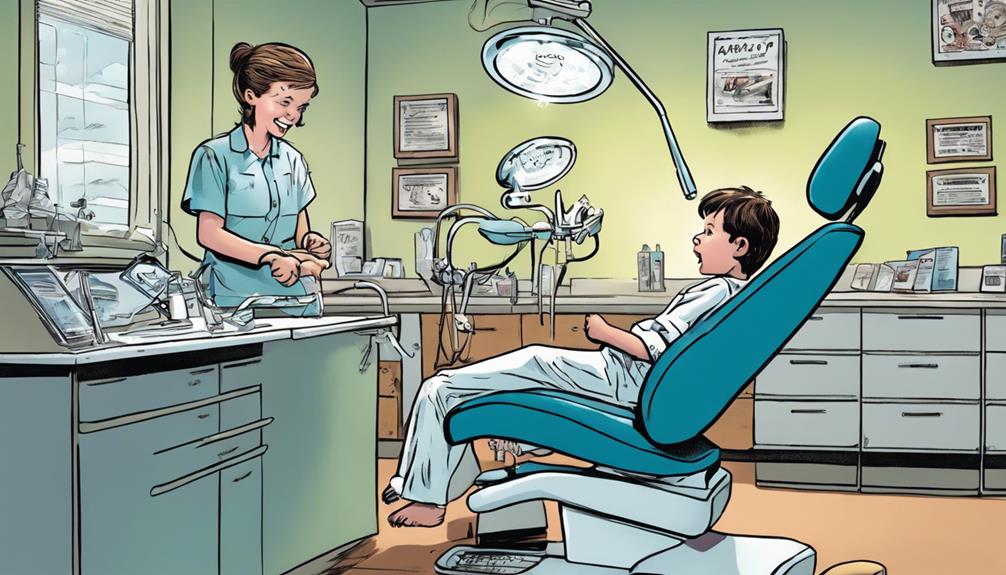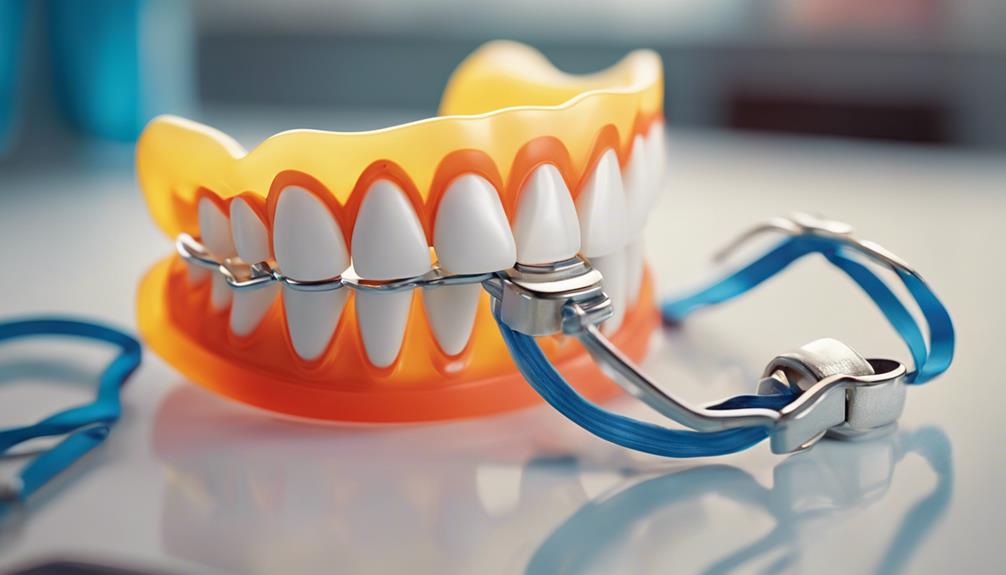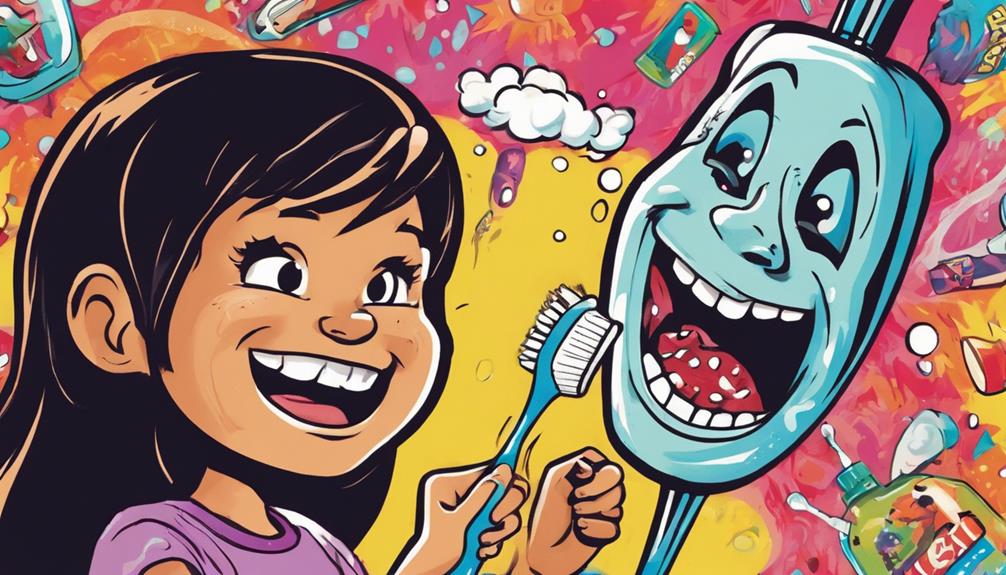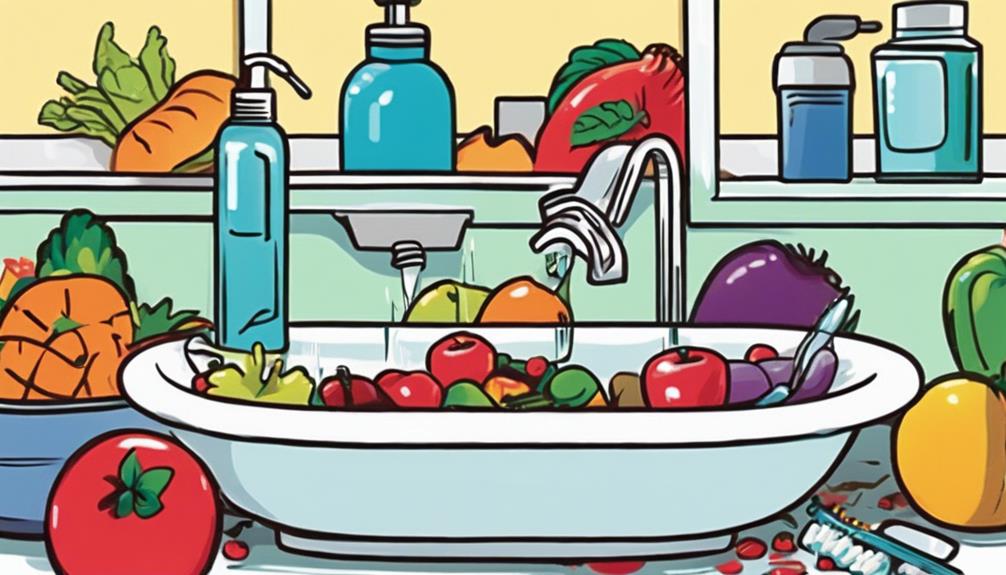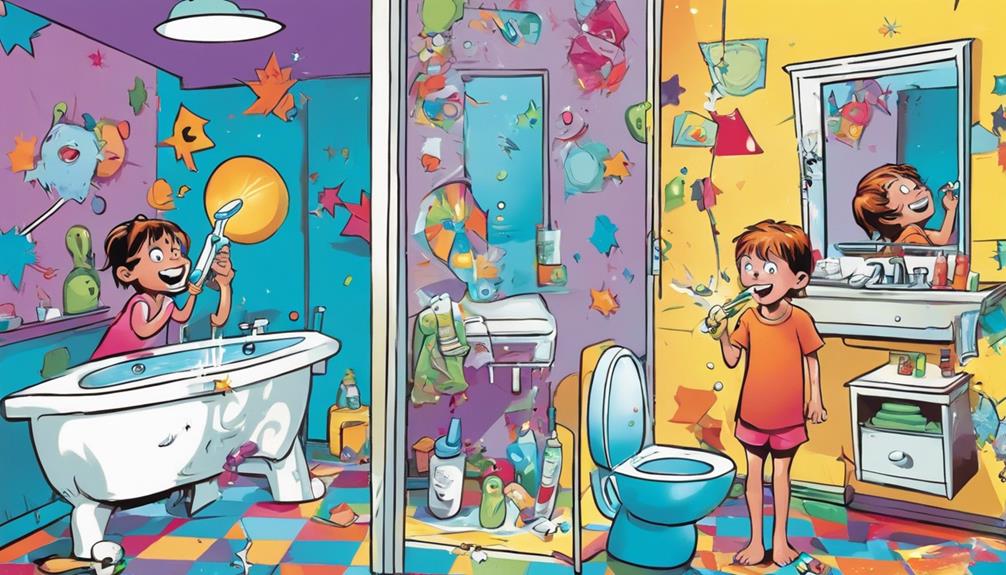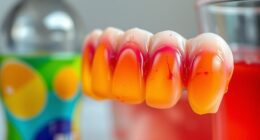Teeth whitening for kids can pose serious risks to their dental health. Young children have thinner enamel, making their teeth more vulnerable to damage from strong whitening agents like hydrogen peroxide. Misuse of whitening products can lead to sensitivity, inflammation, and permanent enamel damage. The American Academy of Pediatric Dentistry recommends waiting until at least age 14 to avoid these issues. It's essential to consult a dentist before any whitening treatment, as professional care better safeguards their teeth. If you're curious about safer alternatives and expert advice, there's more helpful information to take into account.
Key Takeaways
- Teeth whitening products, especially those containing hydrogen peroxide, can harm children's thinner enamel, leading to permanent damage.
- Common side effects include tooth sensitivity and gum inflammation, exacerbated by high concentrations of bleaching agents.
- The American Academy of Pediatric Dentistry recommends delaying whitening treatments until at least age 14 to protect dental health.
- Over-the-counter whitening products pose risks of misapplication and enamel damage due to lack of professional oversight.
Understanding Teeth Whitening
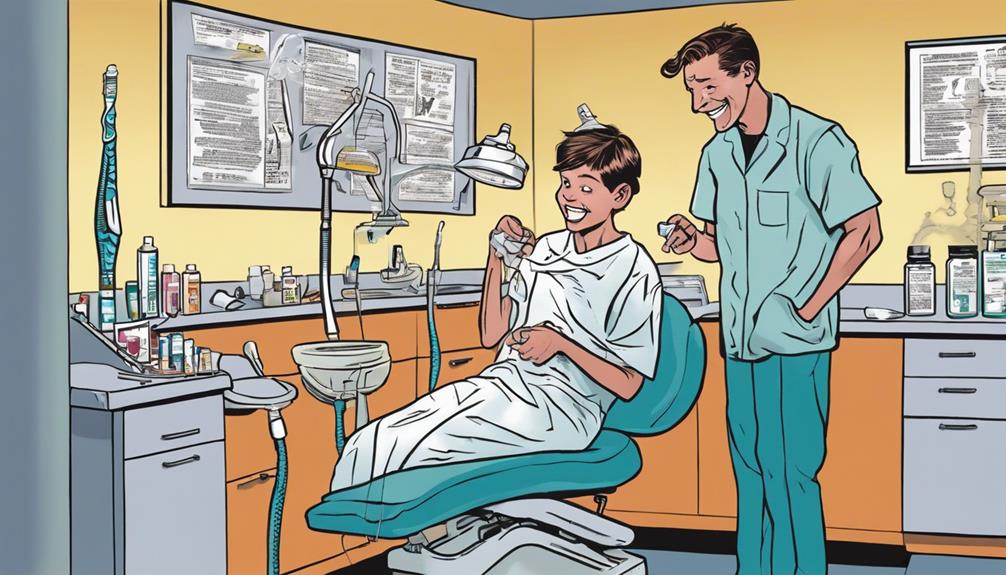
Teeth whitening is often a popular choice for enhancing your child's smile by removing stains and discoloration. Before diving into the whitening process, it's vital to consult with your dentist. A professional can help you identify the most suitable teeth whitening options tailored to your child's needs and guarantee their safety.
There are two main types of teeth whitening: professional treatments performed in a dental office and over-the-counter teeth whitening products for at-home use. While professional treatments can yield quicker results, it's important to take into account your child's age and the stage of their dental development, especially since their permanent teeth are still forming.
You should understand the risks and side effects associated with teeth whitening, such as tooth sensitivity or gum irritation. These reactions can vary between individuals, and it's significant to monitor your child's comfort throughout the whitening process. It’s also important to consult with a dentist before starting any teeth whitening treatment, especially for children. They can provide guidance on the safest and most effective options for preserving baby teeth while achieving a brighter smile. Additionally, establishing good oral hygiene habits and regular dental check-ups can help maintain a child’s dental health as they grow and develop.
Always prioritize your child's oral health and seek guidance from a dental professional. By doing so, you can guarantee a safe and effective approach to achieving that brighter smile without compromising their well-being.
Risks for Children's Teeth

While enhancing your child's smile can be appealing, it's important to recognize the risks associated with teeth whitening for their developing dental health.
Teeth whitening for kids often involves products containing hydrogen peroxide, which can lead to increased tooth sensitivity or gum irritation. Since primary teeth have thinner enamel compared to permanent teeth, they're more vulnerable to damage from these bleaching agents.
Misuse or over-application of whitening products can result in permanent damage, like pitting or discoloration of the enamel. That's why the American Academy of Pediatric Dentistry advises against any whitening treatments until all baby teeth are lost and permanent teeth are fully developed—usually around age 14.
Before considering any whitening options, consult your pediatric dentist to evaluate the risks and benefits for your child. Temporary discomfort or prolonged sensitivity may occur, negatively impacting their overall oral hygiene and well-being.
It's essential to prioritize your child's dental health and avoid unnecessary procedures that could lead to long-term issues. Remember, a bright smile shouldn't come at the cost of healthy teeth!
Common Side Effects
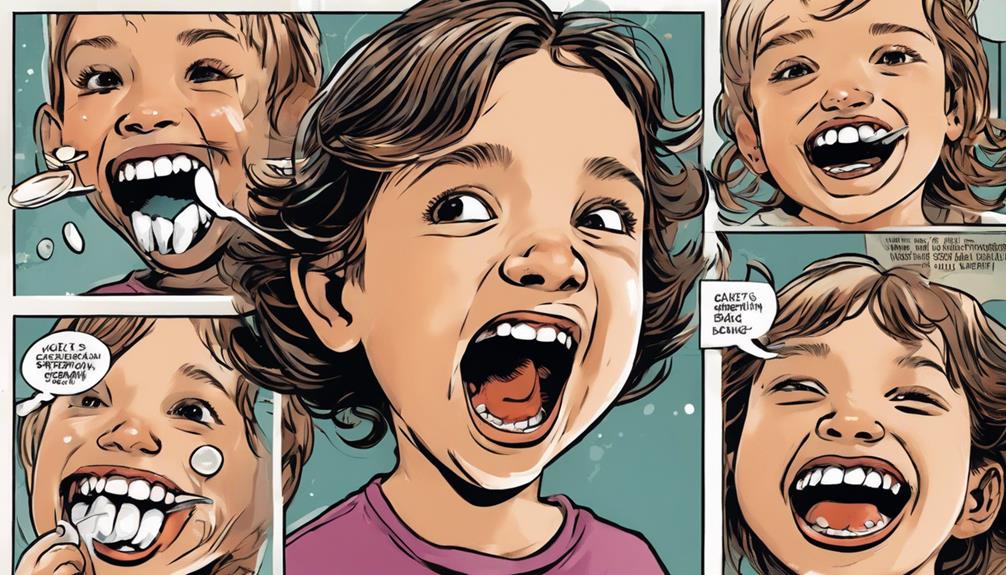
Using whitening products can lead to common side effects, such as tooth sensitivity and gum inflammation, that may cause discomfort for your child. Additionally, overuse of whitening products can also lead to enamel damage and increased tooth sensitivity. It is important to supervise your child’s use of these products to prevent any potential teeth whitening dangers. If your child experiences any discomfort or adverse effects from using whitening products, it is best to consult with a dentist to assess the situation and provide appropriate guidance.
Tooth sensitivity often arises when bleaching agents irritate the gums or mouth, leading to pain during and after treatment. This discomfort can sometimes linger longer than expected, making it important to monitor how your child feels post-whitening.
Gum inflammation may also occur due to exposure to high concentrations of these bleaching chemicals, causing irritation in the soft tissues. Overusing or misusing whitening products can result in permanent damage to tooth enamel, which can manifest as increased sensitivity, pitting, or discoloration.
The American Academy of Pediatric Dentistry recommends avoiding whitening until children are at least 14 years old to minimize the risks associated with immature enamel and tooth pulp.
By waiting until your child reaches an appropriate age for teeth whitening, you can help protect their dental health and reduce the likelihood of experiencing these unpleasant side effects.
Always consult a dental professional before starting any whitening treatment to ascertain your child's safety and comfort.
Enamel Damage Concerns
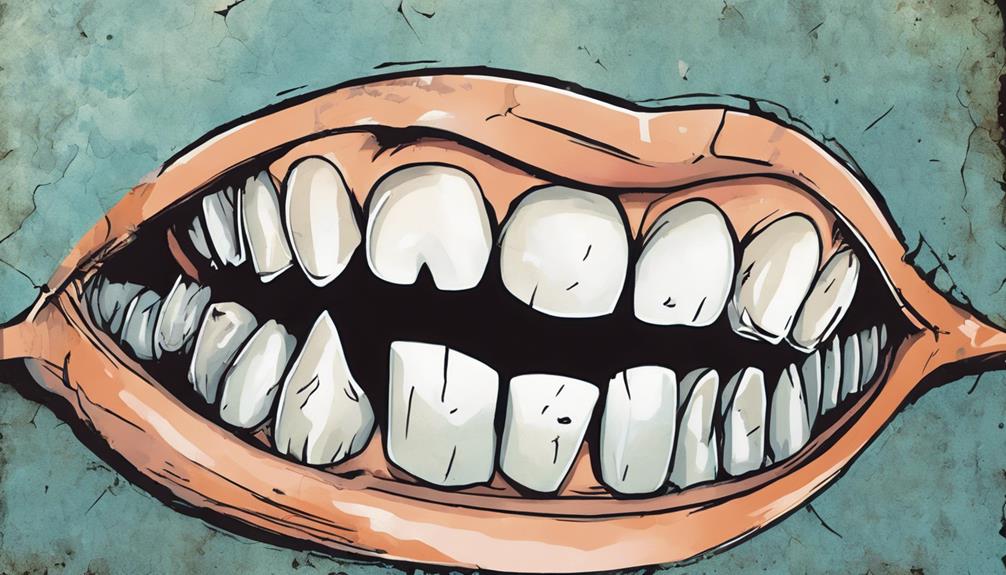
Exposing children's teeth to high concentrations of hydrogen peroxide can lead to permanent enamel damage, especially since their enamel is thinner and more vulnerable than that of adults. You might think teeth whitening is harmless, but the risks far outweigh the benefits for kids.
Consider these concerns:
- Enamel Damage: Prolonged exposure to bleaching agents can weaken enamel, leading to irreversible changes.
- Increased Sensitivity: Weakened enamel can result in heightened sensitivity to hot, cold, and sweet foods.
- Cavities: Damaged enamel makes teeth more susceptible to cavities due to a compromised tooth structure.
- Primary Teeth Risks: Children's primary teeth are naturally whiter and more prone to damage from whitening treatments.
In light of these factors, prioritizing your child's dental health is essential.
Avoid teeth whitening procedures until they reach an appropriate age, ensuring their enamel remains intact and their smiles healthy.
Professional Vs. DIY Whitening
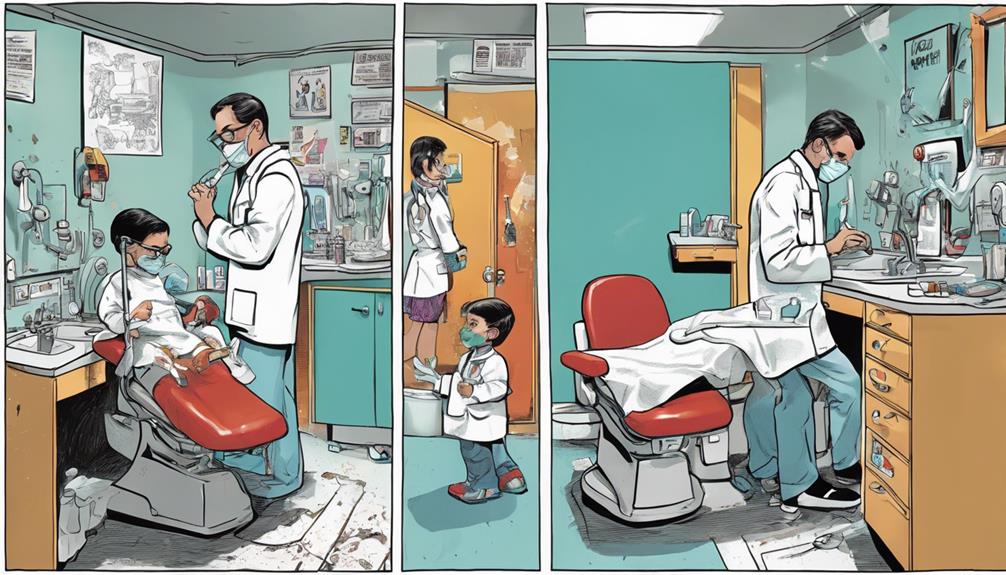
When considering teeth whitening for kids, opting for professional treatments usually guarantees safer and more effective results compared to DIY methods.
Professional whitening is conducted by a dentist who customizes the treatment to your child's specific needs, ensuring a tailored approach that minimizes risks. This is important since children's teeth are more sensitive and susceptible to damage.
On the other hand, DIY whitening products, like over-the-counter strips and gels, often lack proper customization. This can lead to misapplication, resulting in increased tooth sensitivity and gum irritation.
The American Academy of Pediatric Dentistry (AAPD) advises waiting until a child's permanent teeth have fully emerged before considering any whitening. Consulting with a dentist beforehand is essential for evaluating your child's oral health and determining the safest whitening method.
Professional treatments can safely utilize higher concentrations of bleaching agents, yielding more consistent results. In contrast, DIY products may not only deliver inconsistent whitening but also pose a greater risk of enamel damage if misused.
Prioritizing your child's safety and well-being by choosing professional whitening is always the best route.
Post-Treatment Care Tips
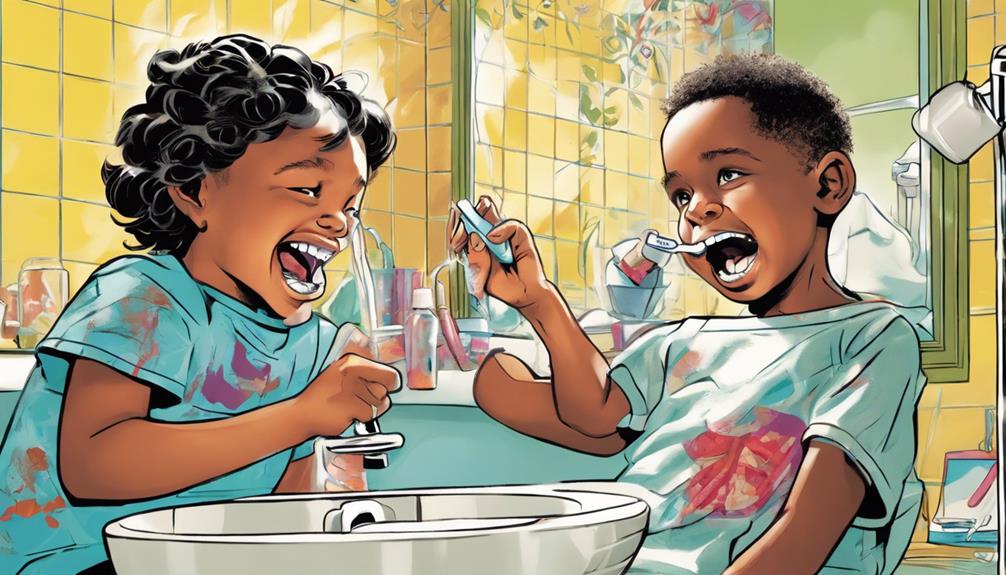
How can you help your child stay comfortable after teeth whitening? Post-treatment care is essential to manage any tooth sensitivity and maintain comfort. Here are some tips to guarantee your child feels their best:
- Use sensitivity toothpaste for at least a week to alleviate discomfort.
- Avoid hot, cold, or acidic foods for 48 hours post-treatment to prevent irritation.
- Rinse with cool water after eating or drinking anything other than water to minimize sensitivity.
- Consider over-the-counter pain relievers like ibuprofen for discomfort management, following the recommended dosage.
Safe Alternatives for Kids

When it comes to whitening kids' teeth, there are safe alternatives you can consider.
You might want to explore natural methods and the importance of professional guidance to guarantee your child's dental health.
Timing also matters, so let's discuss when it's best to pursue these options.
Natural Whitening Methods
Natural whitening methods offer safe and effective alternatives for kids, helping to brighten their smiles without harsh chemicals. You can easily incorporate these techniques into their routine while promoting healthy oral health. Here are some natural options to contemplate:
- Baking Soda: This common household item can effectively remove surface stains during teeth cleanings.
- Strawberries: Mashing strawberries into a paste and applying it to teeth can leverage their malic acid for a brighter smile.
- Fruits and Vegetables: Crunchy options like apples and carrots help scrub away stains as kids munch on them.
- Banana Peel: Rubbing the inside of a banana peel on teeth can provide potassium and magnesium, enhancing brightness.
Professional Guidance Importance
Seeking professional guidance is essential for ensuring safe and effective teeth whitening options for kids, as pediatric dentists can provide tailored recommendations based on individual dental needs.
Consulting a dentist before starting any whitening procedure helps address potential risks associated with high hydrogen peroxide concentrations commonly found in over-the-counter whitening products.
Pediatric dentists assess your child's dental development and recommend safe alternatives, like baking soda, for removing surface stains without the risks of enamel damage or gum irritation that often accompany DIY methods.
The American Academy of Pediatric Dentistry (AAPD) advises against using bleaching agents on children's teeth until all baby teeth are lost, ensuring that permanent teeth are fully developed and healthy.
Timing for Whitening Treatments
It's best to hold off on teeth whitening treatments for kids until they're at least 14 years old, guaranteeing their permanent teeth are fully developed and ready for cosmetic enhancement. The timing for whitening treatments is vital for your child's oral health. Since baby teeth naturally appear whiter and don't need enhancement, it's wise to wait.
Here are some safe alternatives for kids while waiting for professional teeth whitening options:
- Maintain good oral hygiene with regular brushing and flossing.
- Use baking soda sparingly to help remove surface stains naturally.
- Encourage a balanced diet to prevent staining foods and drinks.
- Schedule regular dental check-ups to monitor the development of permanent teeth.
Always remember that over-the-counter whitening products may not be safe for children due to insufficient research on their effects. Consulting your dentist guarantees that any timing for whitening treatments aligns with your child's dental development, keeping their smile healthy and beautiful.
Waiting until the right age not only protects their teeth but also sets the stage for a brighter future smile.
Frequently Asked Questions
Is Whitening Your Teeth Bad for Kids?
Whitening your teeth isn't ideal for kids. Their enamel's thinner, making them more prone to sensitivity and gum issues. It's better to wait until they're older, when their teeth are fully developed and less vulnerable.
Should I Whiten My Child's Teeth?
You might think whitening your child's teeth is harmless, but it's not necessary. Kids' baby teeth are naturally white, and over-whitening can harm their delicate enamel. Always consult a pediatric dentist before considering any treatment.
What Is the Bad Side of Teeth Whitening?
Teeth whitening can lead to sensitivity, gum irritation, and potential enamel damage. Overuse may cause long-term issues like discoloration or structural damage. Always consult a professional before starting any whitening treatment to guarantee safety.
Is Crest Whitening Safe for Kids?
Studies show 70% of kids' teeth are naturally whiter than adults'. Crest whitening products aren't recommended for kids under 14, so consult your dentist before considering any whitening treatments for their developing teeth.
Conclusion
To sum up, while teeth whitening might seem like a fun option for kids, it's crucial to weigh the risks against the benefits.
The truth is, children's teeth are still developing, making them more susceptible to damage.
Instead of opting for harsh treatments, consider safe alternatives that promote oral health.
Remember, a bright smile doesn't come from bleaching; it comes from good habits and care.
Prioritizing your child's dental health will lead to a lifetime of confidence.
